Coyotes might be the newest members of the dog family, but that doesn’t mean there is nothing special about them. The truth is these are quite special mammals, and the more you learn about them, the more interested you become in them. Here’s an introduction to the world of coyotes.
Scientific Name
Coyote’s Latin name is Canis Latrans but is also known as brush or prairie wolf. The name coyote comes from the Aztec name „coyotl”. Coyotes can be found anywhere between Alaska and Central America.
Description
An adult coyote stands about 2 feet tall (60 cm). It’s length ranges 2.5 – 2.8 feet (not including the tail), and it can weigh anywhere between 15 and 46 pounds. Coyotes can be recognized by their coarse and long fur that is whitish below and more than often features a grizzled buff above. Their size and color can vary considerably from one location to another. For instance, the largest coyotes live either in easter Canada or the northeast parts of the United States.
Coyotes Vs. Dogs
Even though both dogs and coyotes belong to the same family, they share some characteristics, but they are not the same. Even the Latin name for coyote, 'Canis latrans’, means barking dog. Then there is the fact that dogs are domestic animals, whereas there are no domesticated coyotes. Dogs are way more versatile as they can be used to keep guard, sniff for treats, or most commonly as pets. In terms of appearance, Coyotes appear way sleeker than most dogs, have a bushy tail, flatter forehead, and have a more pointed muzzle. From all dog breeds, it is the German shepherd that has the closest resemblance to a coyote.
In terms of strength, when faced against each other, the outcome of that largely depends on the dog’s breed. Usually, all larger dog breeds can take on a coyote. For example, a coyote is no match for a full-grown German shepherd or a Kangal dog.
Habitat
Coyotes could once be found only in the prairies and the desert. But times have changed, and now they can be found across mountains and forests. According to statistics, their populations are at a record level as they are practically all over North America. Nowadays, you can often spot them even in suburban areas and large urban parks.
The ideal habitat for a coyote contains abundant prey, decent covers such as shrub lands and woodlands, and good areas for denning and raising baby coyotes. They are especially keen on areas where two different habitats merge. Those areas are called ecotones, and very often, there are coyotes in their proximity.
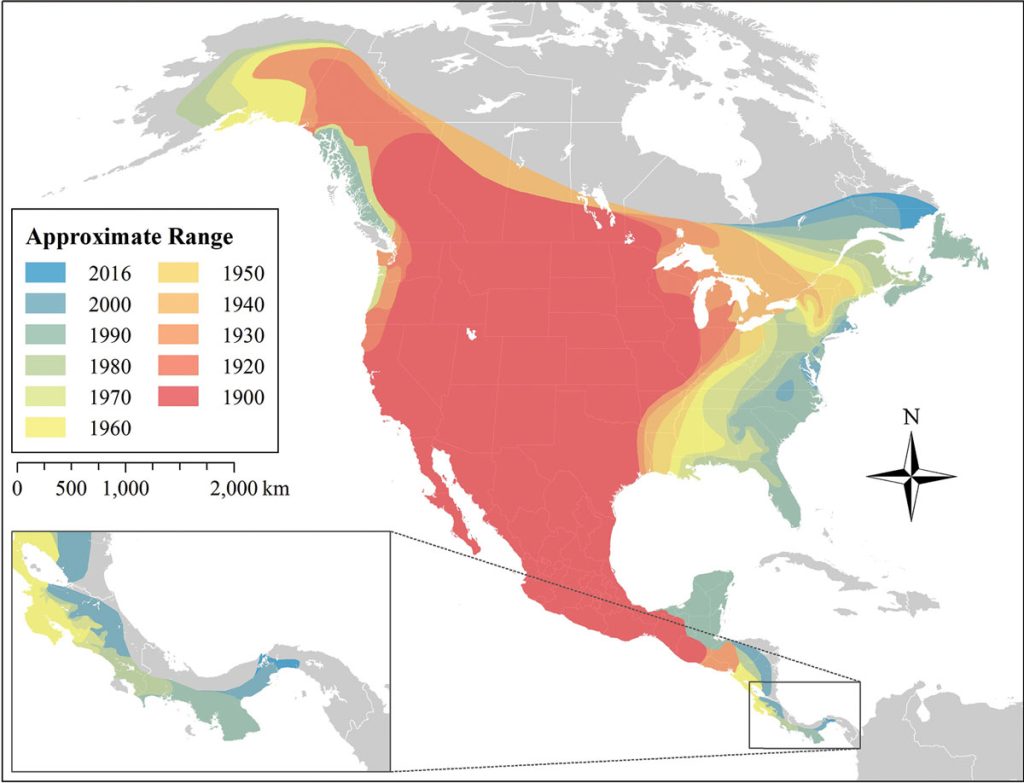
Diet, Predators & Prey
Coyotes are very efficient predators that can run as fast as 35-43 miles per hour. In open areas, they use their sharp eyesight, while in forest or vegetation, they rely mainly on their hearing and smell.
What do coyotes eat?
In the northern areas, snowshoe hares are their most common prey. They also like to hunt white-tailed deer. Even a single adult coyote can bring down an adult deer. Coyotes are especially efficient in hunting down white-tailed deers when there is deep snow. When they catch a deer, they first go for the hindquarters and the back legs. After repetitive bites, the deer can’t run. The final kill is when they choke bite the deer for its throat.
During fall and in the early days of winter, most coyotes hunt either in pairs or as part of a pack. The larger the group, they go for a larger animal. But at the same time, they won’t mind hunting down and feasting on anything else coming their way, no matter how small it may be.
When there is nothing to hunt, they will also consume carrion. In case there isn’t even carrion, they are known to eat plenty of fruits and berries. In the north, they are much fatter during the winter months.
Do coyotes attack humans?
Coyote attacks are very uncommon and usually happen if the coyote has been cornered or when someone is trying to save a pet attacked by a coyote. Encounters between coyotes and people are not a common sight. Coyotes are nocturnal and even concentrated on hunting down their prey rather than some human that happens to be in their proximity. Usually, human encounters end up with the coyote being scared and moving away. On some occasions, the coyote might approach the human if it has been fed previously by other people. Scaring off a coyote is not that difficult.
How do you scare off coyotes?
Waving, noisemaking, yelling, and throwing projectiles in their direction like small rocks and sticks usually does the trick.
Are coyotes dangerous in neighborhoods?
In rare cases where a coyote attacks a human, there is a chance that the human ends up bitten. Nowadays, there are more people killed by flying champagne corks than there are humans bitten by coyotes.
Are coyotes dangerous to humans?
Coyotes are wild animals, but attacks are very rare. There are only two recorded cases in Canada and the United States in which the encounter of a human with a coyote had a fatal outcome for the human. The first such event happened in the 80s in California, in which a coyote killed a child. On the other side, the second one happened in 2009 in Nova Scotia when a 19 years old woman died due to a coyote attack. Even though quite rare, those two events are a reminder that coyotes are still wild animals and that everyone needs to practice a certain level of caution when dealing with them.
What eats coyotes?
Some of the larger carnivores that eat coyotes are brown bears, wolves, the American alligator, and mountain lions.
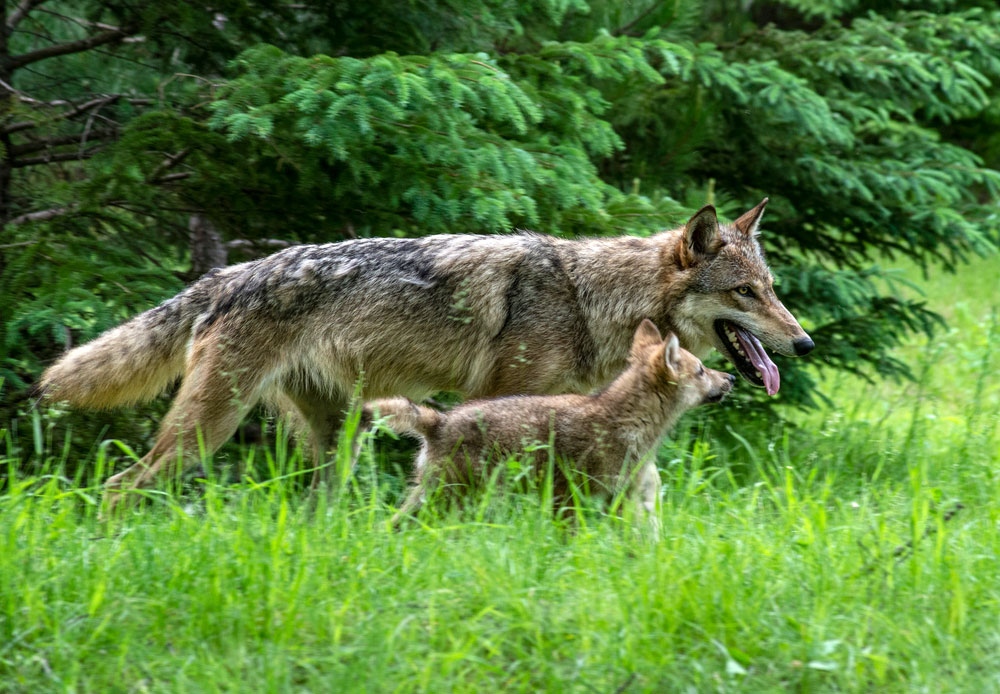
Coyotes Mating & Offspring
The coyote mating season lasts from January to March. The gestation period can last from 58 to 64 days, and female coyotes can bear anywhere from four to seven pups. The baby coyotes are usually born in some underground burrow dug out by the parent coyotes or some badger before. Almost by default, dens are on hillsides where the drainage is good so that the chances of flooding during a rainstorm are minimal. Plus, the visibility needs to be sufficient so that the parents can easily scout the area for danger.
When they are born, the baby coyotes are helpless and blind. In two or three weeks, they start to leave the dent and play around.
Weaning happens as soon as the young ones reach five to seven weeks. Both parents equally contribute to the care and the feed of the young pups. They take care of them until they become six to nine months of age.
In most cases, the young ones disperse in the wild, but sometimes older siblings come and help raise the younger offsprings. From time to time, family groups stick together and form a group in winter.
Baby Coyotes Pictures
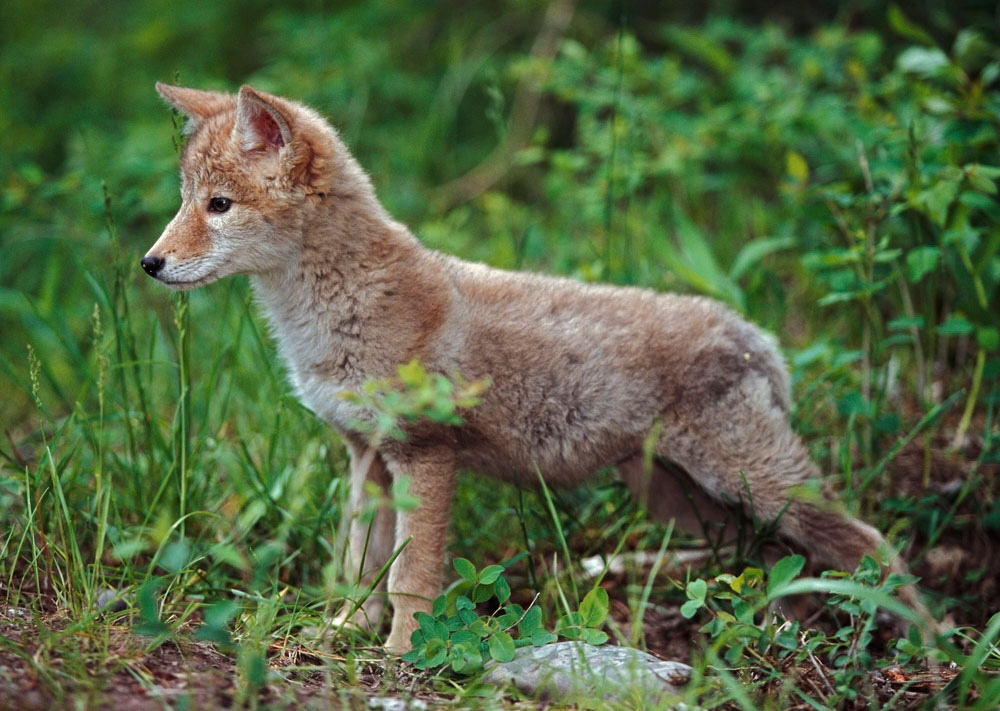
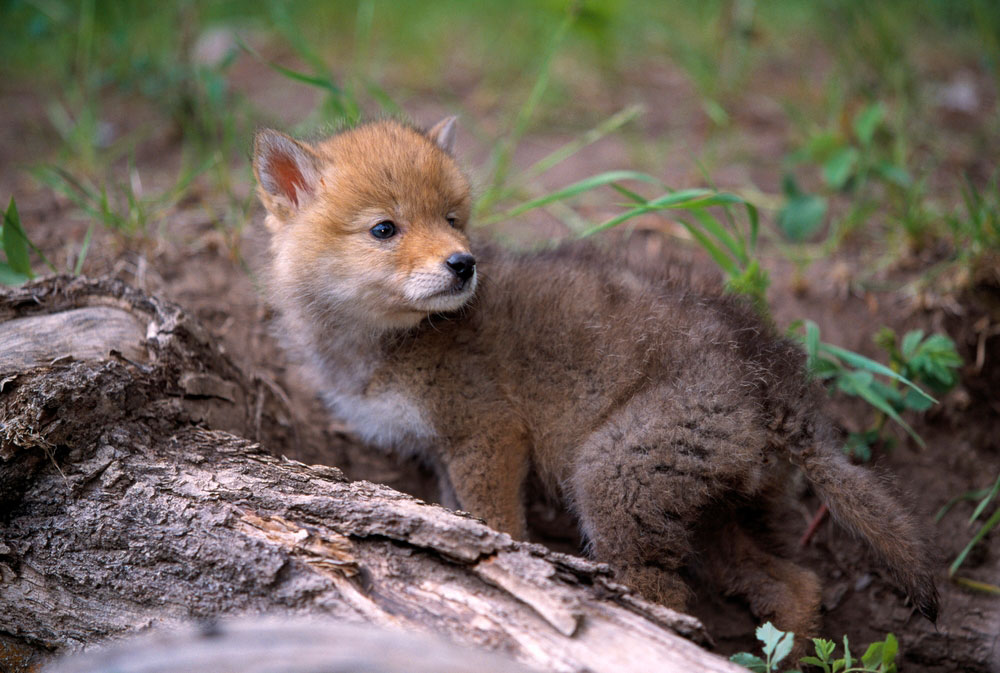
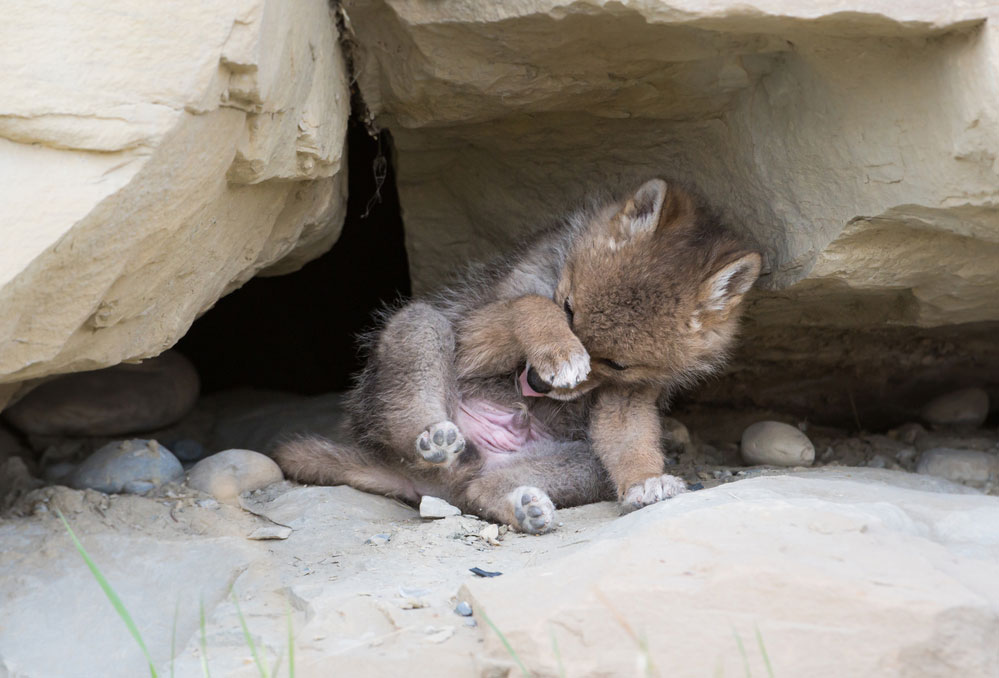
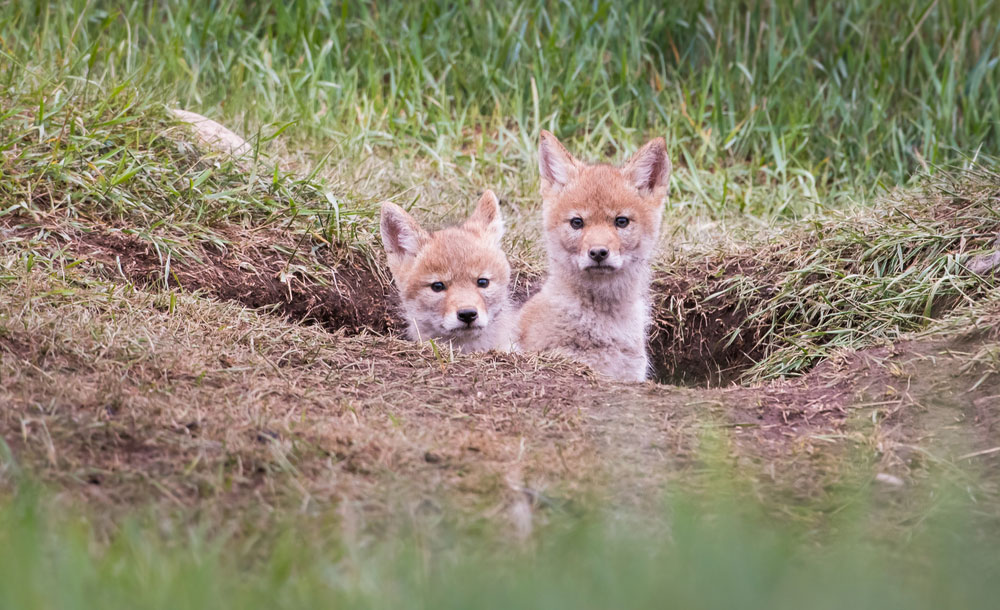
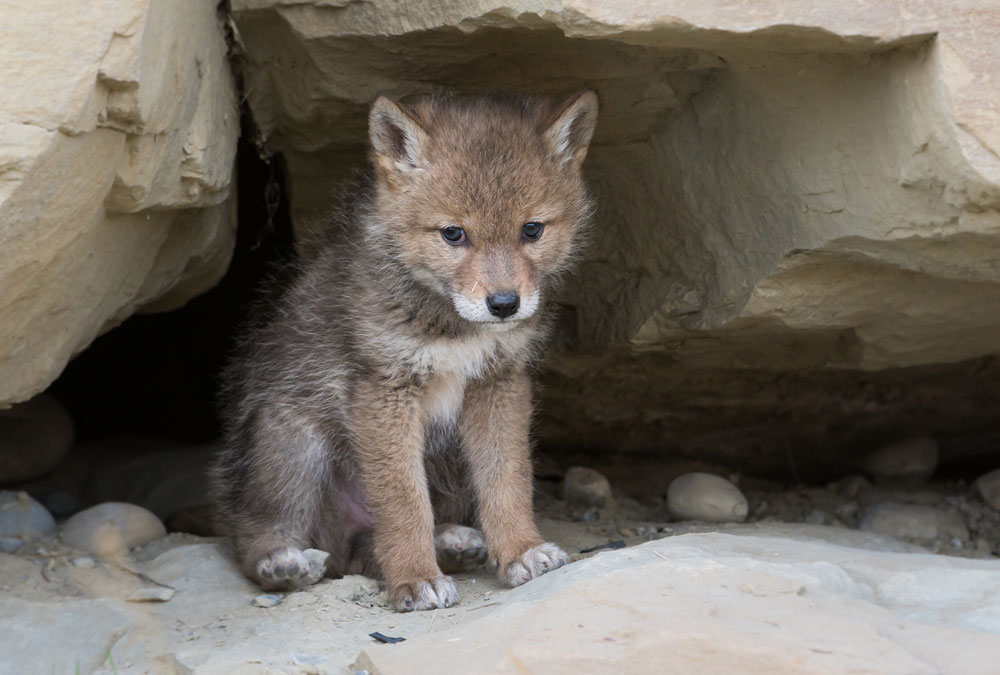
Why do coyotes howl?
Coyotes have some of the most distinctive howls. Some of us know it from TV and movies, while others have heard it while exploring the wild. However, many people don’t know and often ask: when do coyotes howl?
For marking their territory
Coyotes howling is often used to mark their territory and warn any intruders that they are trespassing. Coyotes are very defensive when it comes to their territory, and their first act of defense is their howling.
For communication
Coyotes are social animals, and they often use howling to communicate with each other. Sometimes they howl to call other pack members to come to their aid. Other times they let them know their location. Typically, when you hear them make such a howl, a response can be heard within minutes, if not instantly. Even when a group of coyotes is hunting, they howl to signal each other. That way, they let the alpha know that they are in position and ready to strike. Now, when the alpha howls, it is often because it’s time to attack the prey.
To celebrate unity
Coyotes are social animals that care deeply about their pack. Sometimes coyotes howling is to celebrate that they are happy to be part of the group of coyotes.
Do coyotes howl when they kill something?
This is a type of bragging for coyotes. They want to tell their group of coyotes about their deed. But at the same time, coyotes howling can be a signal to announce that to other packs nearby. The idea is to let the other groups of coyotes know how good they are and that they shouldn’t even think of invading their territory.
Group yip can means the young ones are threatened
When they sense that a predator has invaded their territory, they will scatter all across and start yelping. That way, they try to distract the predator and protect the young ones. That gives them time to get to the young ones and move them from harm’s way.
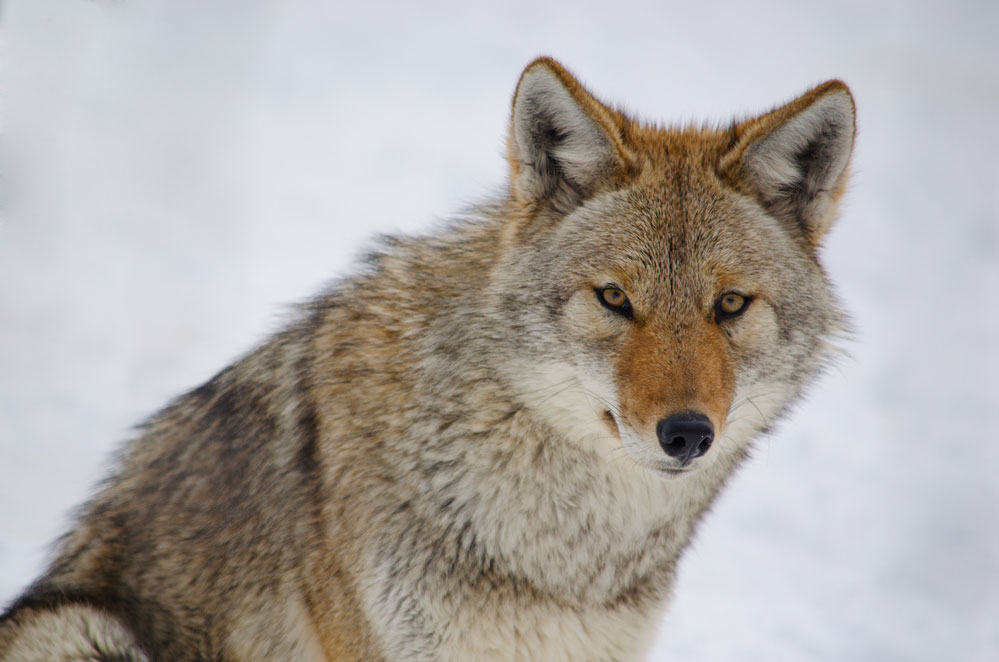
Are coyotes nocturnal animals?
Coyotes are considered nocturnal animals and are known for their night serenades. They do a lot of hunting at night. However, they are not strictly nocturnal as they are quite opportunistic. That means coyotes will jump at any opportunity to catch prey and eat, even in the daytime.
Cool Facts About Coyotes
Wile E. Coyote may be the most famous of its kind. But that doesn’t mean that there aren’t any other cool things about them. Here are some of the lesser-known yet very cool facts about coyotes.
There are coyotes, and then there is the coywolf.
Eastern coyotes are somewhat larger than their western brothers and look a bit more like wolves than actual coyotes. Research has shown that coyotes and wolves mixed, and that’s how this hybrid version called coywolf was created. Some scientists even call for this new variation to be considered as new species, or at the very least subspecies.
Coyotes are super fast.
When chasing prey, they can reach speeds of up to 64 kilometers per hour. That’s practically twice as the fastest roadrunner and very much in line with the speed of a racing greyhound. When they run and walk, they do it on their tiptoes. That way, they can minimize the noise they are making and are quite stealthy. It is a feature that helps them be efficient predators.
Co-parenting is a thing with coyotes.
They raise their pups together as a couple. Often even the entire pack helps out. Sometimes the female pups stay for life within their parent’s group.
Coyotes are monogamous
There is a 2018 study that looked into this claim and proved that coyotes are monogamous. Once they find a partner, they stick with it for the long haul. In case the male coyote dies, the female coyote will leave their territory as soon as the pups are ready to live on their own.
Urban coyotes
More and more coyotes tend to wander in the cities for food. They’ve become so common that every major city in the US has a coyote population. What distinguishes them from their rural brothers is that they are not shy and will eat almost any human food they come across.
Coyotes are excellent swimmers.
Thanks to their excellent swimming skills, there are coyotes on some river and lake islands in Canada and the United States.
Newfoundland has snow coyotes.
Their fur is white, and that’s what makes them distinctive from the typical coyotes. That’s not because they are albinos, but because of the lack of pigment. Some scientists believe that happened because a coyote mated with a golden retriever. So yes, aside from mating with wolves, coyotes are known to sometimes mate with dogs as well.
Coyotes are prone to diseases.
This is unfortunate but a truthful fact. They are singled out as the most common carriers for parasites and diseases from all American carnivores. Experts believe that it’s the case because coyotes have such a diverse diet and extensive habitat. Some of the viral diseases that affect them are hepatitis, distemper, rabies, etc. Then there are the parasitic infections such as fleas, ticks, and mange. Fluke infections are not that common, but they are very lethal and kill almost 90% of all infected coyotes when they happen.

Lydia King is a huge animal lover and has always been fascinated with learning about the animal kingdom. She enjoys writing about anything animal related from scientific information about rare species to animal references in pop culture.












